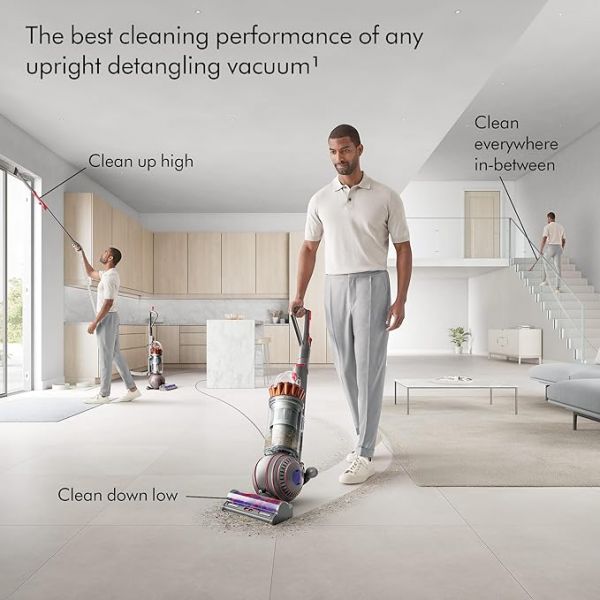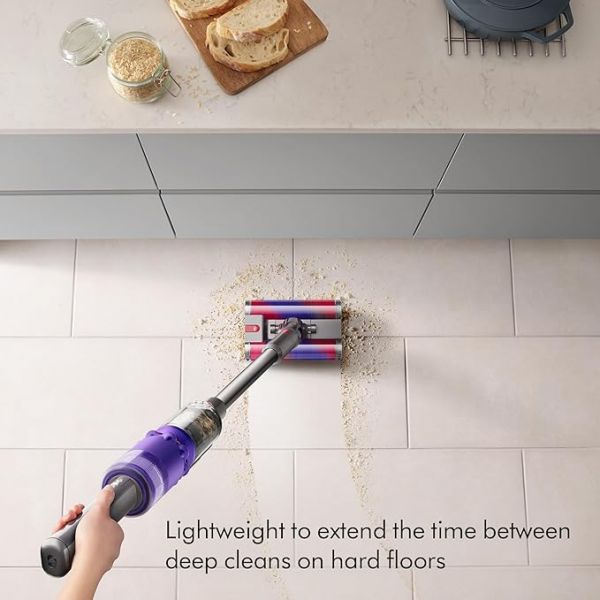How to Choose a Vacuum Cleaner for Upholstery Cleaning
Cleaning upholstered furniture is an essential part of maintaining a tidy and hygienic living environment. Over time, dust, dirt, pet hair, and spilled liquids accumulate on couches, chairs, and other soft furnishings, leading to unpleasant odors, discoloration, and potential health hazards. While regular vacuuming can help keep these surfaces clean, choosing the right vacuum cleaner specifically designed for upholstery cleaning is crucial. In this article, we'll explore the key factors to consider when selecting a vacuum cleaner for upholstery, including suction power, attachments, filtration systems, maneuverability, and additional features.
Understanding Your Needs
Before diving into the technical aspects of vacuum cleaners, it's important to assess your specific requirements. Consider the following questions:
- Type of Furniture: What kind of upholstery do you need to clean? Different materials may require different approaches. For example, leather sofas might benefit from gentle brushes, whereas fabric-covered furniture could tolerate stronger suction.
- Frequency of Use: How often will you be using the vacuum cleaner? If you have pets or children, frequent cleaning might necessitate a more durable and powerful machine.
- Size of Living Space: Do you live in a small apartment or a larger house? Compact vacuums are ideal for smaller spaces, while larger models might be more appropriate for extensive areas.
- Special Requirements: Are there any specific challenges, such as allergies, pet dander, or hard-to-reach corners?
By answering these questions, you'll gain a clearer picture of what features are most important for your situation.
Suction Power
One of the primary considerations when choosing a vacuum cleaner for upholstery is its suction power. Strong suction ensures that embedded dirt, dust mites, and pet hair are effectively removed from deep within the fabric. Here’s how to evaluate suction power:
- Air Watts (AW): Air watts measure the actual cleaning power of a vacuum cleaner. Look for models with higher AW ratings, typically ranging from 100 to 400 AW for residential use.
- Motor Power: Motor wattage indicates the electrical input power of the motor. However, it doesn’t directly correlate with suction strength. Focus more on air watts rather than motor watts.
- Adjustable Suction: Some vacuums offer adjustable suction settings, allowing you to customize the cleaning intensity depending on the material. This is particularly useful for delicate fabrics that might get damaged by excessive suction.
Attachments and Tools
Upholstery-specific attachments play a significant role in achieving thorough cleaning. Common tools include:
- Upholstery Brush: Designed with soft bristles to gently agitate and loosen dirt from fabric surfaces without causing damage.
- Crevice Tool: Narrow and elongated, this tool is perfect for reaching tight spaces between cushions and along seams.
- Dusting Brush: Soft-bristle brush for delicately removing dust and debris from sensitive surfaces like lampshades and decorative pillows.
- Pet Hair Tool: Specially designed to lift and remove pet hair from upholstery, carpets, and other surfaces.
- Extension Wand: Extends the reach of the vacuum, enabling you to clean hard-to-access areas such as ceiling fans and tall furniture.
Make sure the vacuum cleaner you choose includes the necessary attachments for your specific cleaning needs.
Filtration Systems
Effective filtration is critical for trapping fine particles and allergens, preventing them from being recirculated back into the air. There are three main types of filtration systems:
- HEPA Filters: High-Efficiency Particulate Air filters capture 99.97% of particles as small as 0.3 microns, making them ideal for allergy sufferers and those concerned about indoor air quality.
- Washable Filters: These filters can be cleaned and reused, reducing maintenance costs over time. They’re generally less effective than HEPA filters but still provide decent filtration.
- Bagged vs Bagless: Bagged vacuums trap dirt and debris in disposable bags, while bagless models collect waste in a container that needs periodic emptying. Both have pros and cons—bagged vacuums tend to maintain suction longer, while bagless ones save money on replacement bags.
Consider your priorities regarding filtration effectiveness, maintenance, and cost when deciding on a filtration system.
Maneuverability and Ergonomics
Maneuverability affects how easily you can navigate the vacuum cleaner around furniture and obstacles. Factors to consider include:
- Weight: Lightweight vacuums are easier to carry and maneuver, especially if you have stairs or need to move the unit frequently.
- Swivel Steering: This feature allows the vacuum head to pivot, making it simpler to clean around furniture legs and corners.
- Cord Length: Long cords enable greater mobility without needing to switch outlets frequently. Cordless models offer ultimate freedom but may have limited battery life.
- Handle Design: An ergonomic handle reduces strain on your wrist and hand, making extended cleaning sessions more comfortable.
- Storage: Check whether the vacuum can be stored compactly and if it comes with onboard storage for accessories.
Additional Features
Some vacuum cleaners come with extra features that enhance usability and convenience:
- LED Headlights: Illuminate dark areas, helping you spot hidden dirt and debris.
- Automatic Cord Rewind: Simplifies storage by retracting the cord with the push of a button.
- Noise Reduction: Quiet operation is beneficial if you have young children or pets that might be disturbed by loud noises.
- Battery Life Indicators: For cordless models, indicators show remaining battery life, so you know when to recharge.
- Remote Control: Some high-end models allow you to operate the vacuum remotely, offering added convenience.
Budget Considerations
Vacuum cleaners range widely in price, from budget-friendly models to high-end luxury devices. Determine your budget beforehand and focus on finding a balance between features and affordability. Remember that investing in a quality vacuum cleaner can save you money in the long run by extending the lifespan of your upholstery.
Popular Brands and Models
To give you a starting point, here are some popular brands and models known for their performance in upholstery cleaning:
- Dyson: Dyson vacuums are renowned for their strong suction and innovative designs. The Dyson V11 Torque Drive is a powerful cordless option with excellent suction and a variety of attachments.
- Shark: Shark offers a wide range of vacuums, including upright and stick models. The Shark Navigator Lift-Away Professional NV356E is a popular choice for its versatility and strong suction.
- Miele: Known for their durability and high-quality engineering, Miele vacuums are a favorite among homeowners. The Miele Complete C3 Cat & Dog is specifically designed for homes with pets.
- Bissell: Bissell specializes in pet-focused vacuums. The Bissell Pet Hair Eraser Lithium-Ion Cordless Hand Vacuum is perfect for quick cleanups and removing pet hair from upholstery.
- Hoover: Hoover offers budget-friendly options without compromising on performance. The Hoover ONEPWR Evolve Pet Cordless Stick Vacuum is lightweight and versatile.
Maintenance and Care
Proper maintenance is essential to prolong the life of your vacuum cleaner and ensure optimal performance. Follow these tips:
- Regular Filter Cleaning/Replacement: Clean or replace filters regularly to maintain suction power and prevent clogs.
- Brush Roll Cleaning: Remove tangled hair and debris from the brush roll to avoid jamming and reduced efficiency.
- Empty Dirt Container/Bags: Empty the dirt container or change bags when they’re near capacity to prevent overflow and loss of suction.
- Check for Blockages: Periodically inspect hoses and tubes for blockages that could impede airflow.
- Store Properly: Store the vacuum in a dry, cool place to protect it from moisture and extreme temperatures.
Final Thoughts
Choosing the right vacuum cleaner for upholstery cleaning involves considering several factors, including suction power, attachments, filtration systems, maneuverability, and additional features. By understanding your specific needs and evaluating these criteria, you’ll be able to find a vacuum cleaner that meets your expectations and keeps your furniture looking and feeling fresh. Regular maintenance and proper care will ensure that your investment continues to serve you well for years to come.







